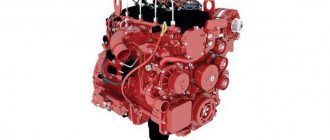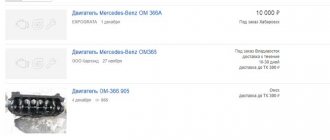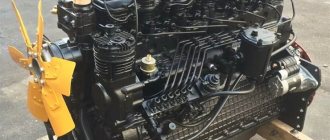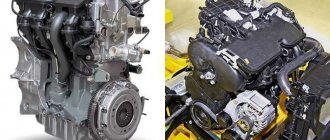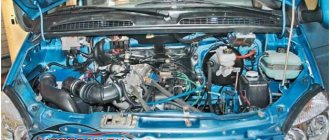Japanese cars are considered reliable and easy to maintain. Take, for example, Solaris, which work in the thousands in taxis. This at least speaks to the reliability of the car. It is clear that a lot depends on the engine, which is the heart of the car. Let's look at the 4G18 engine, its technical characteristics, strengths and weaknesses. Already now one thing can be said for sure - this is a very good power unit that is installed on many cars.
Some general information
The engines of the Japanese company Mitsubishi Motors Corporation, founded in 1985, are currently considered one of the best in their price range. The Japanese relied on reliability and durability, and they were right. Orion occupies a special place among all power units - this is the 4G1 line of internal combustion engines. These engines began to be mass-produced back in the 1970s, and production continues in our time.
Specifically, the 4G18 engine, the characteristics of which we will consider, has been produced since 1978. It is noteworthy that three types of cylinder heads are installed on this engine. Therefore, the gas distribution mechanisms are different. Engine power, depending on the cylinder head, can be as follows:
- SOCH – 86-92 l. With.;
- DOCH – 73-110 l. With.;
- TURBO – 163-180 at 6,000 rpm.
In the same way, depending on the type of cylinder head, the power system differs. For example, for SOCH it can be carburetor or injection, for DOCH it can be GDI or Mivec, and for TURBO it can be a Mivec+ turbine.
Design Features
Within the series, the 4G18 engine was the penultimate modification with the largest combustion chambers, the volume of which is 1.6 liters. design features are:
- 4 cylinders are made of liners inside a cast iron block, arranged in a row;
- the cast iron exhaust manifold has a narrowed diameter to comply with Euro 4/5 standards;
- the gas distribution mechanism has a SOHC V16 design, that is, one overhead camshaft with 12 cams controls 16 valves through rocker arms mounted on two axles;
- the COP system regulates the ignition angle using a vacuum valve mounted on the throttle valve;
- The camshaft drive is belt driven, its resource is limited to 100,000 km maximum;
- the cylinder head is aluminum, narrow due to the single-shaft timing mechanism;
- one wide cam controls the two exhaust valves of each cylinder, two narrow cams open the intake valves;
- the user can carry out major repairs and boosts with his own hands.
Cylinder block
Camshaft 4G18
COP system
SOHC V12 circuit diagram
Engines have hydraulic compensators, but not all of them, so the operating budget is increased either by using high-quality oil or by periodically adjusting the thermal valve clearances, which the manufacturer recommends every 30,000 km.
Description of the 4G18 engine
In general, this power unit can be described as classic. This is an inline four with lower camshafts. Although the camshaft is also installed on top of the SOCH cylinder head. The use of a head with a DOCH gas distribution mechanism implies the use of two camshafts at the bottom.
The timing belt on this car is belt type. Its service life is usually about 100,000 kilometers. But in difficult operating conditions, it is recommended to change it every 70-80 thousand kilometers.
The cooling system is classic, closed type with forced circulation of coolant. Delphi electronic control unit, model MT20U2. The first engines produced by the Japanese were equipped with a SOCH 12V gas distribution mechanism. There were 12 valves and one camshaft. In 1993, a more promising and new American DOCH system appeared. There were already two camshafts and 16 valves.
Technical characteristics and design
The 4G18 is a popular Mitsubishi Motors engine. This is the largest motor in the 4G series. The power unit was equipped with a long-stroke crankshaft and a bored block. The cylinder head has 16 valves.
Orion 4G18 engine for Mitsubishi Lancer.
The 4G18 motor is a prominent representative of the 4G1 motor series. It has minor design changes compared to its younger brother 4G15.
There are hydraulic compensators that eliminate the need for regular valve adjustment. But against this background, there is a belt that should be changed every 90 thousand km. Otherwise, a breakage cannot be avoided, which will result in bent valves.
Technical characteristics of the 4G18 motor:
| Name | Characteristics |
| Manufacturer | Mitsubishi Motors Corporation |
| Motor brand | Orion 4G1 |
| Volume | 1.6 liters (1584 cm3) |
| Injection | Injector |
| Power | 98-122 hp |
| Cylinder diameter | 76 mm |
| Number of cylinders | 4 |
| Number of valves | 16 |
| Fuel consumption | 6.7 liters for every 100 km in mixed mode |
| Engine oil | 5W-20 5W-30 10W-40 |
| Resource | 250+ thousand km |
| Applicability | Mitsubishi Colt Mitsubishi Lancer Mitsubishi Kuda Mitsubishi Space Star Proton Waja BYD F3 Tagaz Aquila |
Sports version of the engine
It is worth drawing your attention to the fact that there was also a turbocharged version of the 4G18 engine, a photo of which you can see in this article. In addition to the fact that such a power unit was equipped with a MIVEC variable valve timing system, it had a block with oil injectors, as well as a turbocharger. The power of this engine was about 180 horsepower. Very good with a volume of 1.5 liters.
This modification of the engine required precise and fast operation from the control unit. The ECU had to cope with the following tasks:
- adjust idle speed;
- control the fuel injection system;
- monitor the ignition timing;
- perform self-diagnosis.
After 2004, they began to produce a newer engine instead of 4G18 - 4A91.
4G18 engine: characteristics, recommended oil and maintenance
This motor model is considered one of the most durable. Around 1997, a record mileage was recorded on a Mitsubishi Mirage car, which amounted to about 1.6 million kilometers. These numbers speak about the quality of the engine better than any advertisement.
With careful operation and gentle modes, the performance characteristics of the motor practically do not deteriorate as it wears out. Scheduled repairs of the 4G18 engine are usually performed after 250 thousand kilometers. For this simple reason, scheduled maintenance turns into a routine replacement of consumables and fluids on the car. But it is advisable to comply with the regulatory deadlines prescribed by the manufacturer:
- changing engine oil - every 8-10 thousand kilometers;
- Timing belt, rollers and seals - 90 thousand kilometers;
- antifreeze replacement - 25 thousand kilometers.
The manufacturer recommends filling the system with synthetic motor oils that meet ACEA class A3, A5. Among them: VALVOLINE, SHELL and many others. Currently, many motor oil manufacturers produce lubricant suitable for Japanese engines, so this should not be a problem.
Maintenance schedule 4G18 1.6 l/98 – 122 l. With.
The naturally aspirated Japanese 4G18 engine, made in China, will last more than 300 thousand km if you adhere to the maintenance regulations:
- It is recommended to change the oil and the corresponding filter every 10 thousand in the absence of hydraulic compensators or 5 thousand if they are present;
- The timing belt resource is 90,000 miles, it is usually changed at the same time as the pump;
- attachment belts are serviced more often - after 30,000 miles;
- purging of crankcase ventilation is required at the turn of 20 thousand km;
- a cast iron exhaust manifold can burn out only after 100,000 miles;
- The service life of candles is 2 years on average, the battery is 5 years, but a lot here depends on the design and manufacturer;
- The fuel filter must be replaced after 40,000 km, and the air filter after 15 - 20 thousand mileage;
- depending on operating conditions, antifreeze loses its properties after a run of 40–50 thousand km.
An exhaust manifold
All operations can be performed independently in the garage and even in the field.
Typical faults
As noted at the very beginning, 4G18 belongs to the 4G1 family, and it has all the weak points of this line. Let's look at the main problems of this motor and how to fix them. The first thing that owners of this engine usually encounter is increased oil consumption after a run of 200,000 kilometers. In most cases, this is due to critical wear of the piston rings, which need to be replaced.
When the valves in the engine begin to knock, it is most likely due to low-quality, unsuitable oil or non-compliance with the replacement interval. The overall contents of the internal combustion engine can also contribute to the appearance of knocking. To fix the problem, you must first clean the valves and cylinder head. Then replace the oil with a high-quality and proven one. Also, do not delay replacement.
Motor reliability and maintainability
Raising the issue of malfunctions of the 4G18 motor, there is no particular difference with its predecessor 4G15. There are some difficulties starting the engine, as well as problems with the throttle valve. The engine is characterized by vibrations, as well as increased oil consumption. There is also a possibility that the piston rings will soon collapse, this is due to the imperfection of the cooling system of this model. Despite the shortcomings described, the engine is extremely and generally recognized as reliable. With timely replacement of engine oil (at least three liters with a total volume of 3.3 liters), filter and other consumables (ideally once every 5,000 kilometers, on average 10,000), as well as when operating in conditions far from extreme, The engine can withstand a service life of over 250,000 kilometers without major repairs, and often significantly exceeds this value.
A few more popular problems
Many motorists are faced with the fact that at some point starting the engine becomes significantly more difficult. This happens for several reasons. Firstly, this is typical for this engine when starting in extreme cold. The manufacturer recommends not operating the vehicle at high subzero temperatures.
It can also flood the spark plugs, again when starting in cold weather. And another reason is a “dying” fuel pump. In this case, it is recommended to simply replace it. It is quite possible that the scheduled times for replacing fuel filters were not observed; this may also cause problems when starting the engine.
Another common problem is vibration at idle. Unfortunately, the designers were unable to eliminate this defect. Usually, slight vibrations are quite normal. But in any case, it is worth checking the condition of the engine mounts. It is possible that they are worn out and require replacement.
4G18 improvement
Very often this engine is subject to tuning. Improvements can affect many systems in a car, but without improving the engine, it is unlikely that the desired results will be achieved. Some people don’t bother and simply replace the 4G18 engine with a 4G63 or similar.
The simplest option is to order a Greddy E-ManaGe turbo kit, which is installed directly on the standard piston engine. But it is still recommended to replace the injectors with more efficient ones and install them from the 4G64 model.
If the owner decides to achieve power up to 350 horsepower, then it will be necessary to replace the standard pistons with forged ones and install H-shaped connecting rods. In this case, change the crankshaft to a lightweight one and install an oil injector on the block. In this situation, tuning costs will be impressive, so many experts recommend installing a 4G63 engine instead of a 4G18, whose power is 280 hp. With.
A little more about the engine
In a narrow circle of motorists, this engine is simply called “one and a half”. It has been in production for over 20 years and is fully researched. In fact, this is a modification of 4G13, or rather, its bored-out version. The Japanese took a block from a 1.3-liter engine with a 71 mm piston and bored it out for a 75.5 mm piston. As for gas distribution systems, we have already dealt with this, but I would like to note that the two-shaft American DOCH is considered the most reliable and most suitable for tuning. After all, SOCH is already morally outdated.
The manufacturer recommends not to neglect the scheduled timing of timing belt replacement. This is due to the fact that when it breaks, the valves bend, and this immediately entails costs of approximately 40,000 rubles for major repairs. Despite the fact that this engine cannot be called whimsical, it must be regularly maintained and high-quality consumables used. Only in this case can you count on long-term uninterrupted operation of the power unit.
Typical problems of power units
The most common problem with a 1.3-liter engine is floating idle speed. This is due to the design features of the throttle valve. Also, many owners complain that the engine stalls when the mileage exceeds 120-150 thousand km. One of the main problems of the 4G13 is the timing drive. If the belt breaks, the piston bends the valve.
Car owners have complaints about the 1.6-liter internal combustion engine due to increased oil consumption. This is due to the early occurrence of the piston rings. You can get rid of the problem by decarbonizing or overhauling the power unit.
The distinctive feature of the 4G63 in the form of two balancing shafts often causes problems for drivers. Despite this, the engine is very reliable.
Interesting details
Among motorists, the technical characteristics of the 4G18 engine and its level of reliability are rated a solid four. Still, this is not the most trouble-free and unpretentious power unit from the Japanese. In order for it to work for a long time and properly, it is necessary to use high-quality oil, change it on time, and choose gentle operating modes.
Many people advise giving preference to other models when purchasing cars equipped with these power units. Whatever one may say, development does not stand still, and this also applies to internal combustion engines. Modern engines are manufactured using different technologies. The use of various materials and alloys makes it possible to increase the strength and service life of parts. For example, the 4G18 engine does not have hydraulic compensators, so the valves must be adjusted every 15 thousand kilometers. These are additional costs and not always small.
